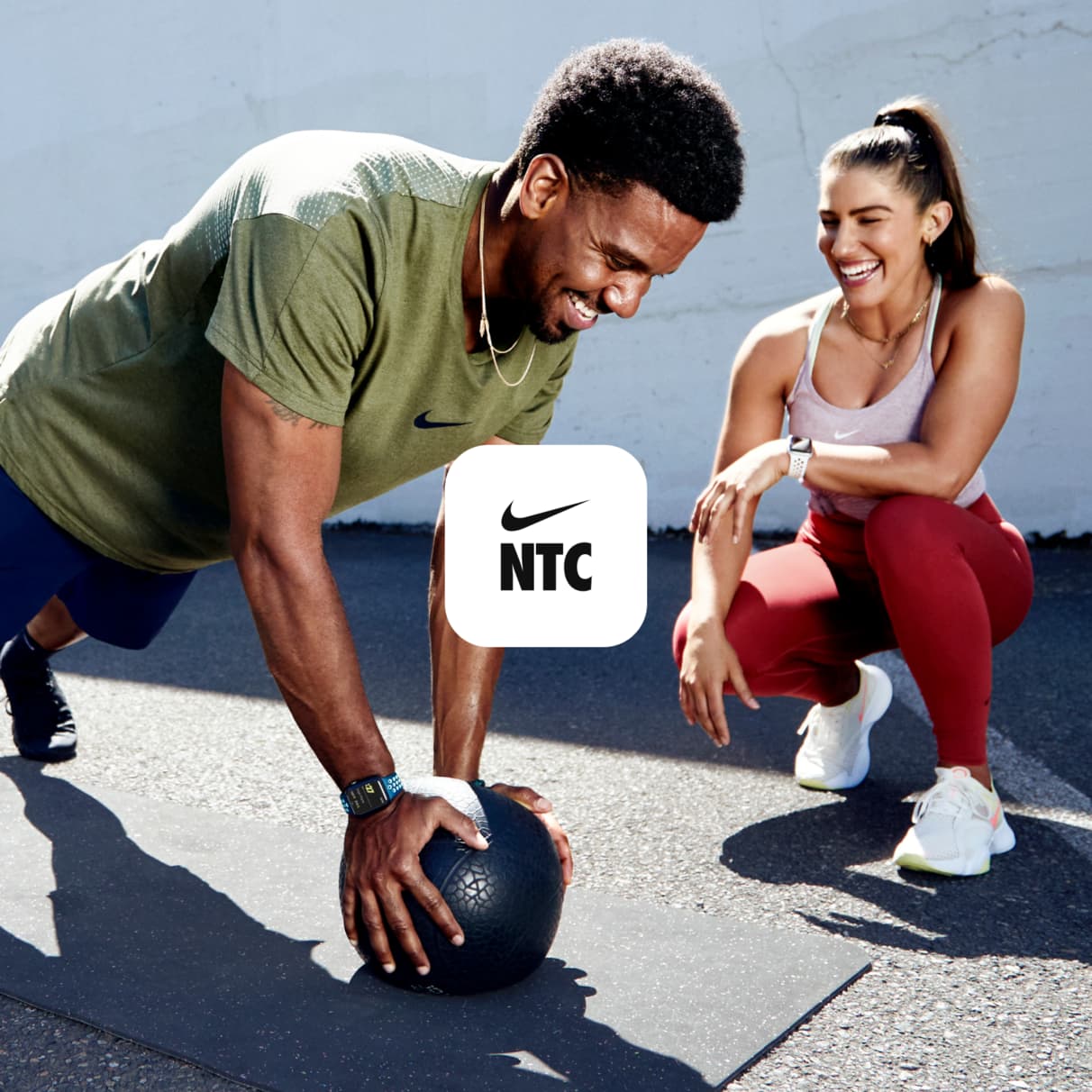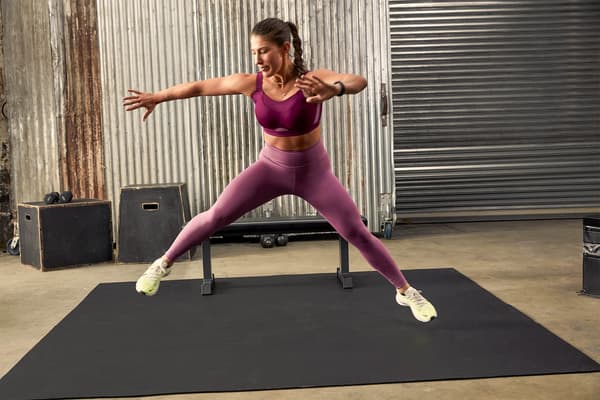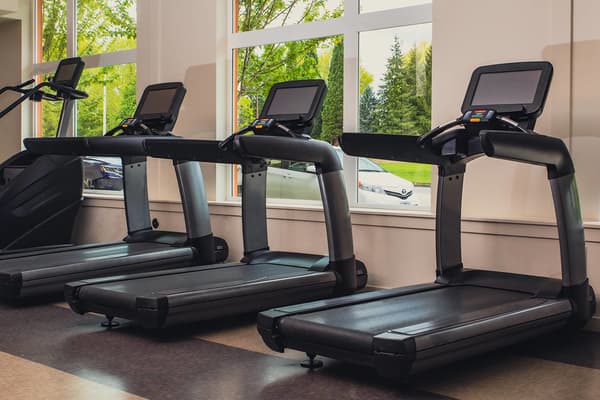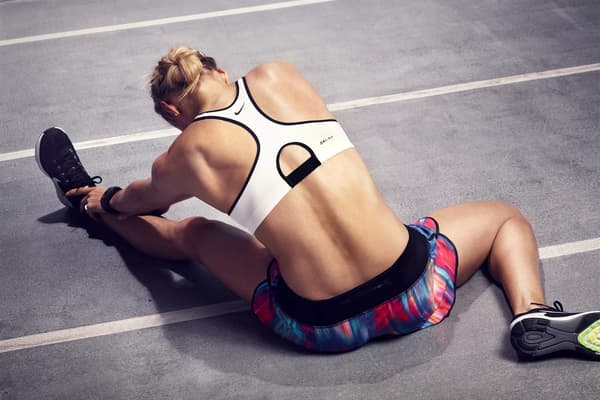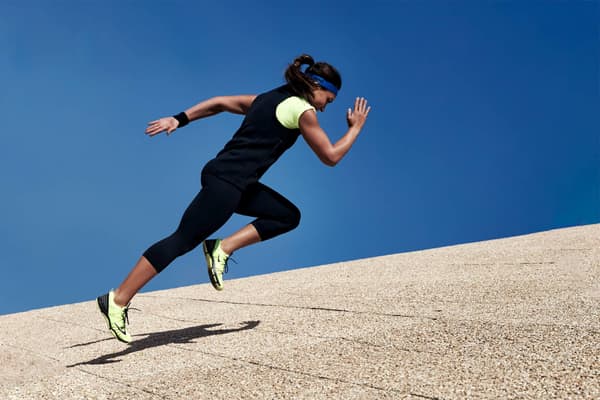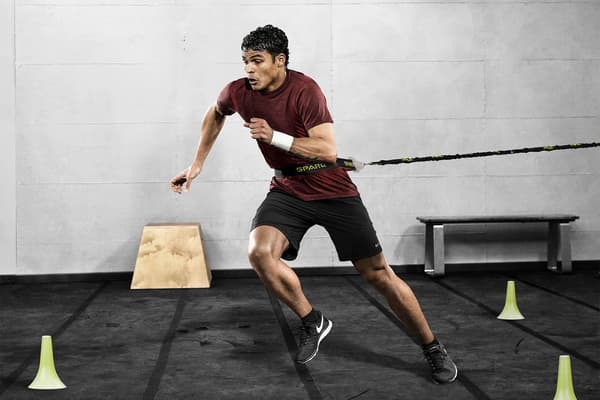These Are Some of the Best Stretches to Do Right After Running
Sports & Activity
Once you’re done with your run, hit the mat and begin the recovery process with these stretches.
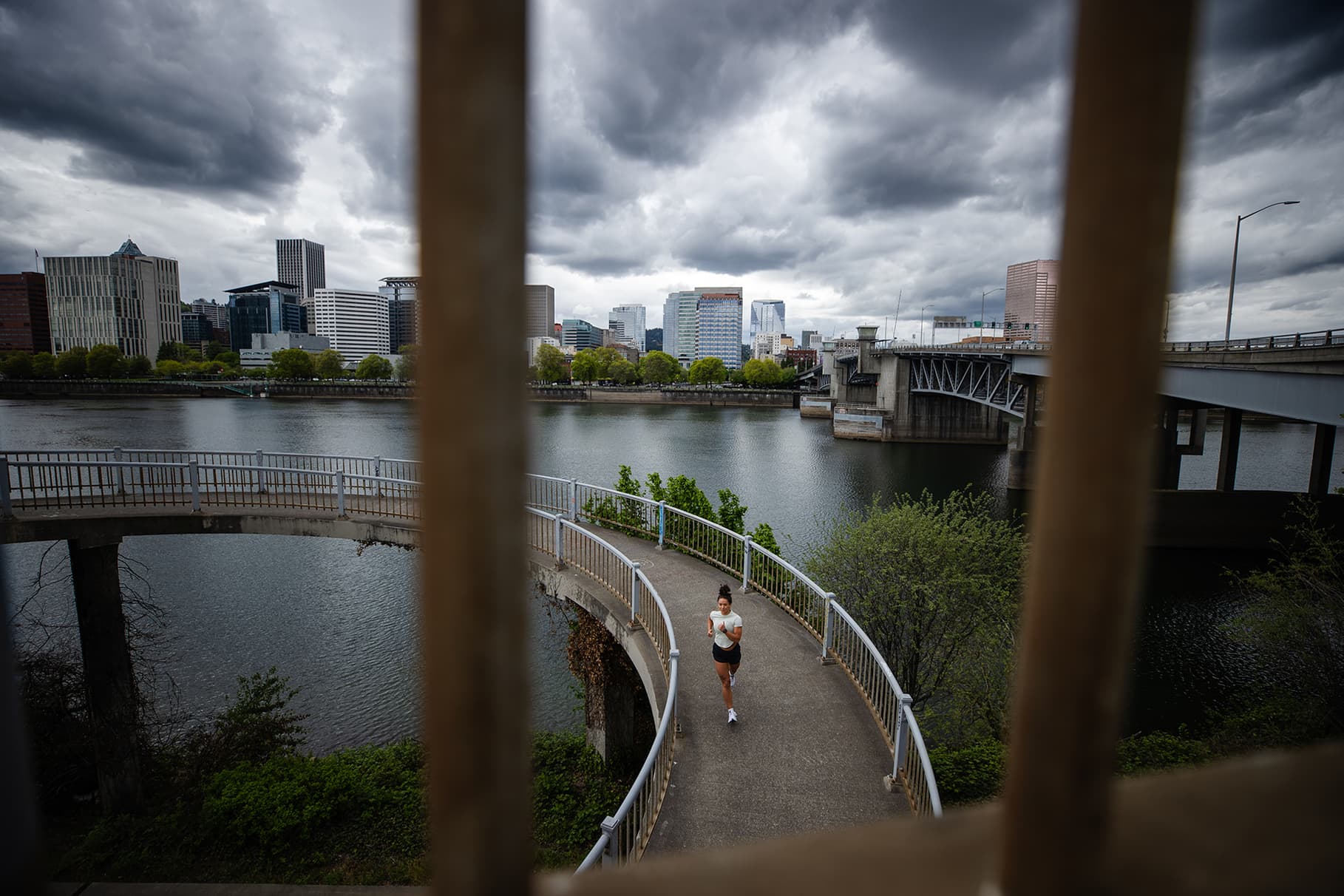
After going for a run, you may notice that your body feels sore — a key indicator that both rest and recovery are needed.
And a critical part of your recovery process involves stretching. When the muscles are warm, they are more flexible. Stretching them at this point can improve range of motion and accelerate recovery. More specifically, stretching right after a run can help reduce muscle and joint stiffness that can occur post-workout, known as delayed onset muscle soreness (DOMS).
It’s essential to stretch after a run, and you may even incorporate stretches into your pre-run routine. As a part of your warmups, you can add in a few dynamic stretches such as leg swings, spinal rotations, and arm circles. These exercises gently warm up your muscles so that they're ready for more intense activity. After your workout is done, you’ll want to perform static (doesn't involve motion) stretches.
But first, it's always a good idea to start your post-run recovery routine with a cooldown. This involves reducing the intensity of the exercise for about 5-10 minutes. You might lightly jog or walk or perform another aerobic exercise at an easy effort level. The goal is to slowly let your heart rate come back down while your muscles are still warm. This will allow you to hold stretches for longer, minus all of the huffing and puffing.
Once your cooldown is complete, you can begin static stretches. These are isometric holds (a form of static stretches) that stretch those muscles that have been hard at work throughout the duration of your run.
Don't miss What Are the Best Shoes for Long-Distance Running!
Why Static Stretching After a Run is Important for Recovery
Stretching may help to reduce the chances of developing certain running injuries, primarily shin splints. However, the research around this remains a bit mixed. What most exercise scientists can agree on, though, is that stretching can contribute to injury prevention via two main mechanisms:
- Stretching can increase range of motion (ROM)
- Stretching can increase blood flow
When you stretch warm muscles, you can increase their ROM. This directly transfers into your running performance. Tight muscles with a restricted ROM negatively impact running economy and can lead to injuries. In fact, a 2019 study examined the effects of calf stiffness. In short, the researchers found it affected balance and gait ability (aka how you walk) in a small group of participants.
Increasing blood flow to the working muscles after exercise can accelerate recovery. Blood circulation transports nutrients to the muscles and filters out waste products such as lactic acid. This can reduce the symptoms associated with delayed onset muscle soreness, which can present as muscle stiffness, tightness, tenderness, swelling, or decreased strength of the exercised muscle.
So, the more consistently you include stretching you into your post-run routine, the more you enhance your recovery. This can then allow you to feel less sore, and more prepared, for your next workout.
The Best Post-Run Stretches
This is a modal window.
Hamstring Stretch
Tight hamstrings are a common complaint made by runners. This can happen due to poor running form. If you over-stretch your hamstrings by taking strides that are too long, the result might be tight hamstrings. Here’s your solution.
- Lay on your back with feet planted in front of you.
- Raise your right leg towards you and hold on to the back of it with both hands, fingers interlocked.
- Exhale as you slowly encourage your leg towards you.
- Hold for 30 seconds.
- Switch legs.
This is a modal window.
Standing Quad Stretch
If you’ve been running uphill, you’re bound to have some burned-out quads. Even for long-distance runners on flat land, the quadriceps are one of the most common aches post-run. That’s because they’re so important for absorbing the shock of impact, stabilizing the knee, and propelling you forward.
- Start in a standing position with your feet together.
- Raise your right foot up from the ground and grab it with your right hand.
- Keep your knees as close together as possible.
- Gently pull your heel towards your glutes.
- Hold for 20–30 seconds.
- Switch to the other leg.
This is a modal window.
Pigeon Stretch
You can thank your hip flexors for each stride you take. These muscles allow flexion at the hip joint, allowing you to swing your legs forward without toppling over. But tight hips and a tight groin can be common, especially if you have a job that requires hours of sitting. Here’s your relief.
- Sit on the floor with your feet together and knees out wide.
- Adjust your positioning so that your right foot and right shin stay put while your leg left is straightened behind you.
- Your knee may need to come inwards but keep your right ankle in front of your left hip and your hips square.
- Try to lower your upper body towards the ground and take a few deep breaths.
- Hold the position for 30 seconds before changing sides onto your left leg with your right leg outstretched.
This is a modal window.
Figure-Four Hip Flexor Stretch
Here’s another hip flexor stretch that’ll open up your hips. If you find the pigeon stretch difficult due to reduced hip flexibility, this one will be easier for you.
- Lay on the floor with your feet planted in front of you and your knees bent.
- Bring your left foot over your right knee, with your left knee bending outwards.
- Gently raise your right leg off the ground, towards you.
- Hold onto the back of your right thigh.
- Exhale and gently draw your thigh towards you.
- Hold for 15–30 seconds before changing legs.
This is a modal window.
Seated Single-Leg Calf Stretch
Your calves are the first point of impact when your body hits the ground. As a result, runners are prone to shin splints, especially after a long run or running on uneven surfaces.
- Sit on the floor with your feet together and knees out wide.
- Straighten your left leg, keeping your right foot touching the inner thigh.
- Hinge at the hip towards your left leg and reach out to grab your big toe on the left foot.
- Flex your left foot and gently draw it towards you to stretch your calf and Achilles tendon in your ankle.
- Hold for 15–30 seconds before changing sides.
This is a modal window.
Downward-Facing Dog
Downward-facing dog may just be your new go-to yoga pose — and it can also help runners. It stretches the low back, hamstrings, calves, and feet. Holding this pose after a run can help to destress the mind while stretching out the body.
- Start on all fours with your hands shoulder-width apart.
- Inhale as you push your glutes in the air, coming up from each knee, with your feet planted hip-width apart.
- Your arms and legs should be straightened, creating an inverted V-shape.
- You can paddle out your feet from side to side to get a deeper stretch in your legs and ankles.
- If you have tight hamstrings, you may need to bend your knees slightly to get both feet planted on the floor.
If you're looking for an app that will help you stay accountable on your recovery routine post-run — as well as one that will give you fresh workout ideas — be sure to download the Nike Training Club app!
